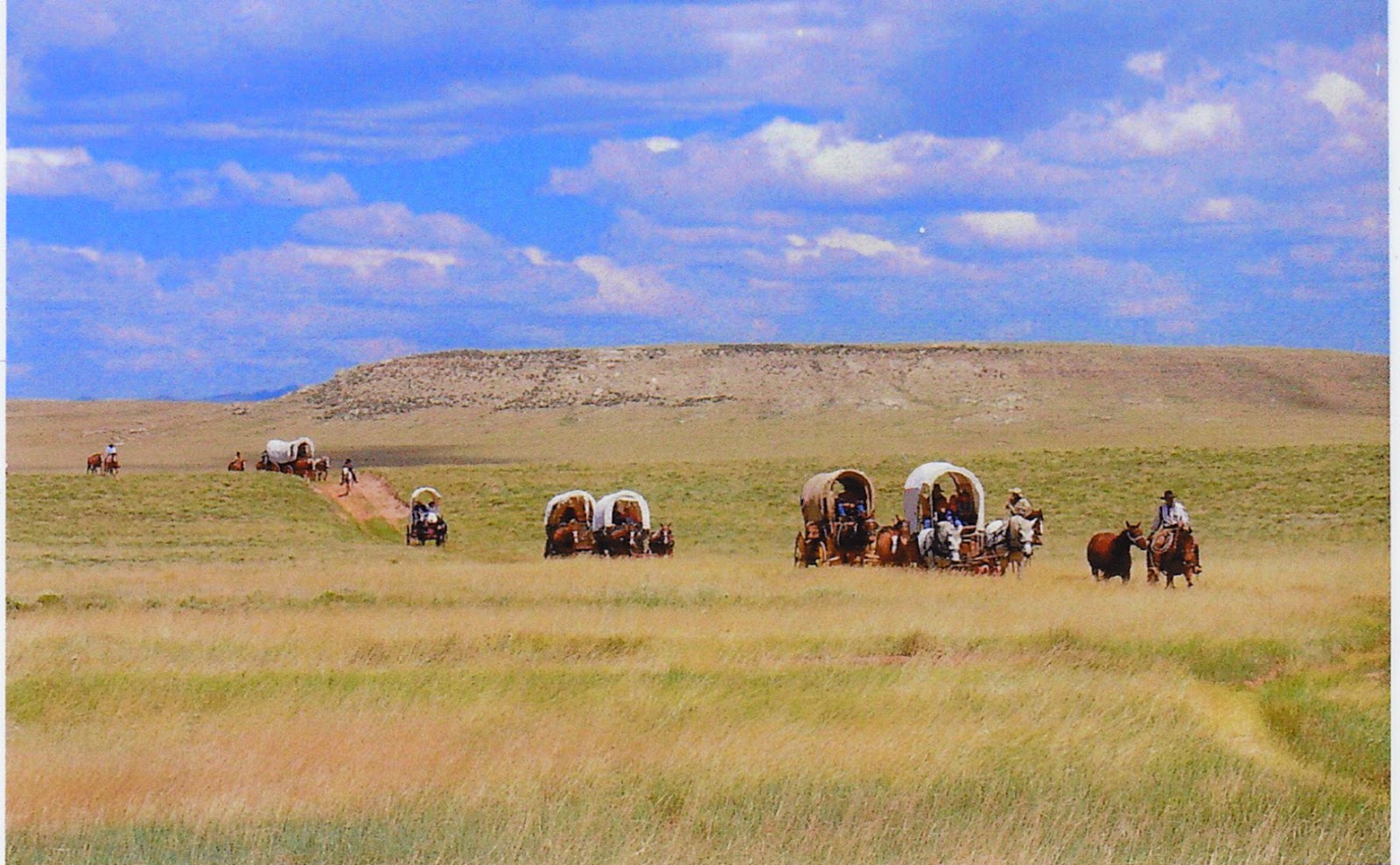from Ben Kern wagon train photos
My cousin and I were close growing up (she's the blonde in the photo below and I am the one with glasses). When the family got together, she and I were a set. We played, took walks, and sometimes took turns making up stories. On one such walk, when I tried to turn the story over to her, she said--you tell it all. And I did.
When I was in my early 20s, I used a Royal upright typewriter to put that story onto paper-- white-out, carbon sheets, and stacks of paper. By then I had done more research into what going west on the Oregon Trail meant. It still was probably the length of a novella today. The characters though stayed true. They were the heart of the book.
Years went by and I read more books about the trip West. When a computer first came into my life, it was an Atari-- also a game machine. My husband told me its word processor would be better for writing. I thought no way. How could I write without seeing paper in front of me? For some writers, this is a truth; a few still hand write their books for the rough draft. For me though, where typing let me put down ideas as fast (almost) as I think them, I took to the new technology immediately. One feature alone sold me on it-- the ability to rearrange blocks of text-- well, and no more white-out. From then on I wrote on changing computers as I typed all my previously written stories onto hard-drives, with in the beginning floppy drives as insurance, then CDs and today jump drives of increasing capacity.
When I worked with a professional consulting writer, the story had a different title-- Taopi Tawote. Over a number of months, I spent a lot of money mailing pages back and forth. She taught me so much as she highlighted and sent back extensive notes. It felt like being back in school. Taopi Tawote is Lakota for the plant yarrow and means wound medicine. In the bigger sense, my story was about a wound that needed to be healed-- physically but even more emotionally.
The problem with that title was it sounded like a Native American story. It is not. Sometime in the 90s (how I wish I was more anal about keeping notes as to when I write this or that), I wrote another novel following this family forward a few years to after they got to Oregon. It had another complete romance. For awhile, I thought I could keep my plant titles (Native American confusion or not). Rose of Sharon was perfect for the second romance. Then in around 2010, another of the Stevens had their romance and Goldenrod had arrived.
When I began bringing books out in the winter of 2011, I held back on these. I loved these books but couldn't let them go. Along came a fourth, which I got the idea for in 2013 but didn't actually write until the fall of 2014. There simply was no fourth plant. I wanted four titles that would seem like a series, that would tell the essence of each book. When I came up with those four titles, I had my first one named-- Round the Bend.
My Oregon Series travels from 1851 in Missouri to Oregon and eventually takes the Stevens family to 1868. Background for each of the romances is the changing world that Oregon was as more people arrived, and the culture shifted with the changes in the growing nation. You might think, since the war wasn't fought there, that the Civil War would little impact a state this far west, but it did. Oregon also had a lot going on that made for interesting storytelling from its own Trail of Tears, shanghaiing, cultural rifts, and even Indian wars.
Now I had four books but was still undetermined as to whether to bring them out. I even debated trying to find a publishing house that might like Oregon historical romances. Except I had gotten used to having the freedom to tell my story my way-- and fall on my sword if readers didn't agree. I liked being an indie writer and had no desire to try and please an editor by changing things, which I felt were critical to my stories.
Still, what to do with them? It was the winter of 2015 that I decided to bring out all four-- three months apart. The first will be March 21-- date chosen because it's my brother's birthday and the first full day of spring.
It wasn't until I had made the decision that I realized the four books will be coming out on Spring Equinox, Summer Solstice, Fall Equinox, and Winter Solstice. I didn't plan it that way (maybe the muse did), but I like the idea.


